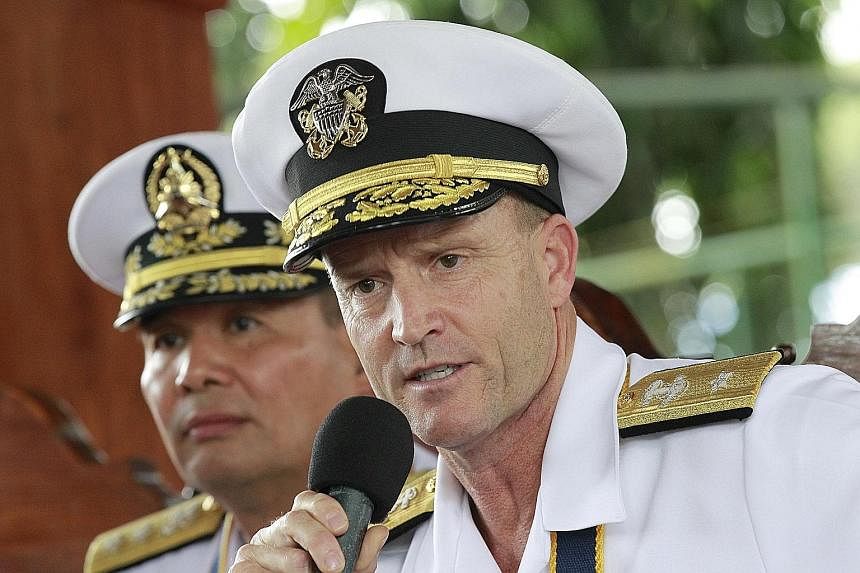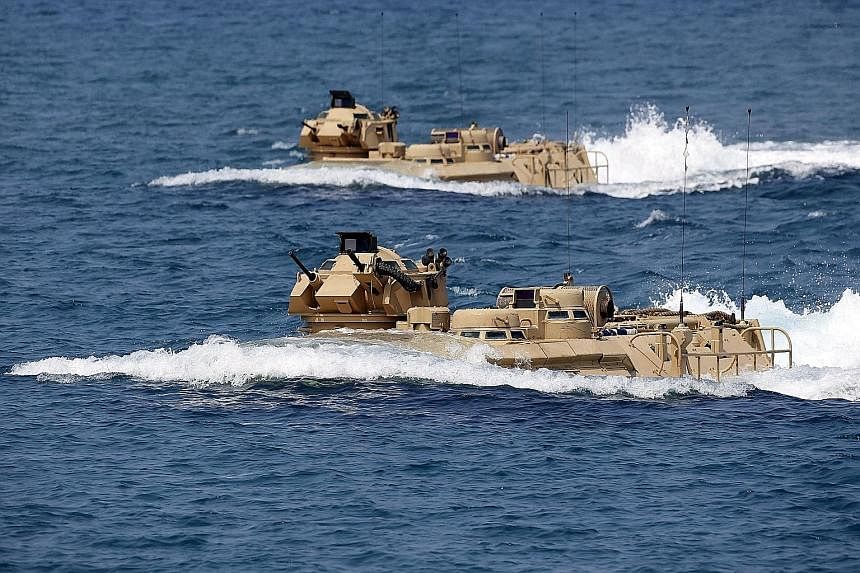MANILA - The United States and Japan are holding separate military drills with the Philippines near disputed islands in the South China Sea, signalling support for the country as China extends its reclaimed reefs in the waters.
The annual Cooperation Afloat Readiness and Training (Carat) Philippines joint exercise began yesterday off Palawan island and will run until Friday, while the Philippine and Japanese navies are holding drills around the same island until Saturday. Manila has held naval drills with Washington since 1995, but the exercise with Tokyo, a World War II foe, is only its second after one earlier this year.
The US has backed South-east Asian nations including the Philippines as tensions escalate with China over territorial claims in the South China Sea, while Japan is providing patrol vessels to the Philippine coast guard. Meanwhile, President Benigno Aquino has rallied neighbours to respond more aggressively to China's efforts to enforce its claims to 80 per cent of the waters.
"This year's exercise reflects more than two decades of increasingly complex training ashore, at sea and in the air," said US Navy spokesman Arlo Abrahamson.
The drill includes a sea phase with the littoral combat ship USS Fort Worth, diving and salvage ship USNS Safeguard and a P-3 Orion surveillance aircraft and at least one Philippine frigate, according to the US Navy. It is the first time a littoral combat ship has taken part in Carat Philippines and the P-3 Orion is the aircraft used by the US to monitor the South China Sea.
Japan's exercises with the Philippines are taking place adjacent to the Spratly islands, where China has created more than 800ha in waters also claimed by the Philippines, Vietnam, Brunei, Taiwan and Malaysia. Japan has sent a P-3Orion and 20 personnel.
Tensions have risen as China warned planes and ships away from reefs where it is reclaiming land. The USS Fort Worth had an encounter last month with a Chinese ship - it was reportedly followed by a frigate - and a US surveillance plane was repeatedly warned by radio to divert from its path near the reefs.
"We prefer to look at it as a strategy of regional stability and less of defence," Rear Admiral William Merz, commander of Task Force 74, said on Palawan in response to a question about how the drills may boost the Philippines' ability to defend territory. "We have a lot of history that these types of exercises, working with our allies, tend to lead to a very stable environment in the areas..."
China will construct facilities to meet "necessary" military needs and various civilian needs, after it finishes reclamation in the near term, its Foreign Ministry said this month. The construction does not target any nation and will not affect navigation or aviation freedom, it said.
Protecting freedom of navigation in the disputed waters resonates in the region because the South China Sea hosts more than US$5 trillion (S$6.7 trillion) of shipping each year and is home to about a 10th of the world's annual fishing catch.
"The intent of Carat is enhancing capabilities, navy-to-navy capabilities, increasing interoperability," Rear Admiral Leopoldo Alano, commander of the Philippine Fleet, said yesterday on Palawan. "These can be used both in wartime missions or missions other than war."
China criticised drills involving more than 11,000 soldiers from the Philippines, US and Australia near the contested islands in April. The expanded war games were inappropriate and ran counter to efforts to ease tensions, the state-run Global Times said then.
BLOOMBERG, AGENCE FRANCE-PRESSE


